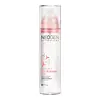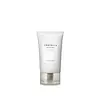What's inside
What's inside
 Key Ingredients
Key Ingredients

 Benefits
Benefits

 Concerns
Concerns

 Ingredients Side-by-side
Ingredients Side-by-side

Water
Skin ConditioningDipropylene Glycol
HumectantButylene Glycol
HumectantIsononyl Isononanoate
Emollient1,2-Hexanediol
Skin ConditioningGlycerin
HumectantNiacinamide
SmoothingBetaine
HumectantEthylhexylglycerin
Skin ConditioningAdenosine
Skin ConditioningEclipta Prostrata Extract
Skin ConditioningXanthan Gum
EmulsifyingLactobacillus Ferment Lysate
Skin ConditioningHippophae Rhamnoides Oil
EmollientIsopentyldiol
HumectantMelia Azadirachta Leaf Extract
Skin ConditioningMoringa Oleifera Seed Oil
EmollientHoney Extract
HumectantSodium PCA
HumectantSodium Lactate
BufferingGluconolactone
Skin ConditioningAllantoin
Skin ConditioningXylitol
HumectantTrehalose
HumectantPanthenol
Skin ConditioningHydrolyzed Collagen
EmollientJuglans Regia Seed Oil
Skin ConditioningSqualane
EmollientLactic Acid
BufferingArginine
MaskingAspartic Acid
MaskingPCA
HumectantAsiaticoside
AntioxidantMadecassic Acid
Skin ConditioningAsiatic Acid
Skin ConditioningCaprylic/Capric Triglyceride
MaskingGluconic Acid
Glycine
BufferingAlanine
MaskingMusa Sapientum Fruit Extract
Skin ConditioningTuber Melanosporum Extract
HumectantPropolis Extract
Skin ConditioningDaucus Carota Sativa Root Extract
Skin ConditioningArtemisia Capillaris Extract
Serine
MaskingOlea Europaea Fruit Oil
MaskingValine
MaskingPropanediol
SolventAdansonia Digitata Seed Oil
EmollientCeramide NP
Skin ConditioningIsoleucine
Skin ConditioningThreonine
Proline
Skin ConditioningHydrogenated Lecithin
EmulsifyingPhospholipids
Skin ConditioningTuber Magnatum Extract
Skin ConditioningPhenylalanine
MaskingHistidine
HumectantPhellinus Linteus Extract
Skin ConditioningGlutathione
Hyaluronic Acid
HumectantBifida Ferment Lysate
Skin ConditioningCholesterol
EmollientBeta-Glucan
Skin ConditioningTocopheryl Acetate
AntioxidantStreptococcus Thermophilus Ferment
HumectantCeramide Ns
Skin ConditioningCeramide As
Skin ConditioningCeramide EOP
Skin ConditioningCeramide AP
Skin ConditioningHydrolyzed Hyaluronic Acid
HumectantPhytosterols
Skin ConditioningSodium Hyaluronate
HumectantDisodium EDTA
Parfum
MaskingWater, Dipropylene Glycol, Butylene Glycol, Isononyl Isononanoate, 1,2-Hexanediol, Glycerin, Niacinamide, Betaine, Ethylhexylglycerin, Adenosine, Eclipta Prostrata Extract, Xanthan Gum, Lactobacillus Ferment Lysate, Hippophae Rhamnoides Oil, Isopentyldiol, Melia Azadirachta Leaf Extract, Moringa Oleifera Seed Oil, Honey Extract, Sodium PCA, Sodium Lactate, Gluconolactone, Allantoin, Xylitol, Trehalose, Panthenol, Hydrolyzed Collagen, Juglans Regia Seed Oil, Squalane, Lactic Acid, Arginine, Aspartic Acid, PCA, Asiaticoside, Madecassic Acid, Asiatic Acid, Caprylic/Capric Triglyceride, Gluconic Acid, Glycine, Alanine, Musa Sapientum Fruit Extract, Tuber Melanosporum Extract, Propolis Extract, Daucus Carota Sativa Root Extract, Artemisia Capillaris Extract, Serine, Olea Europaea Fruit Oil, Valine, Propanediol, Adansonia Digitata Seed Oil, Ceramide NP, Isoleucine, Threonine, Proline, Hydrogenated Lecithin, Phospholipids, Tuber Magnatum Extract, Phenylalanine, Histidine, Phellinus Linteus Extract, Glutathione, Hyaluronic Acid, Bifida Ferment Lysate, Cholesterol, Beta-Glucan, Tocopheryl Acetate, Streptococcus Thermophilus Ferment, Ceramide Ns, Ceramide As, Ceramide EOP, Ceramide AP, Hydrolyzed Hyaluronic Acid, Phytosterols, Sodium Hyaluronate, Disodium EDTA, Parfum
Water
Skin ConditioningGlycerin
HumectantPropanediol
SolventDipropylene Glycol
HumectantCyclopentasiloxane
EmollientCentella Asiatica Extract
Cleansing1,2-Hexanediol
Skin ConditioningCyclohexasiloxane
EmollientTrehalose
HumectantCaprylyl Methicone
Skin ConditioningC12-14 Pareth-12
EmulsifyingCarbomer
Emulsion StabilisingTromethamine
BufferingC30-45 Alkyl Cetearyl Dimethicone Crosspolymer
EmollientAmmonium Acryloyldimethyltaurate/Vp Copolymer
Butylene Glycol
HumectantXanthan Gum
EmulsifyingZingiber Officinale Root Extract
MaskingMentha Piperita Leaf Extract
Skin ConditioningEthylhexylglycerin
Skin ConditioningDipotassium Glycyrrhizate
HumectantTranexamic Acid
AstringentDextrin
AbsorbentTheobroma Cacao Seed Extract
AntioxidantLeuconostoc/Radish Root Ferment Filtrate
AntimicrobialBiosaccharide Gum-1
HumectantDisodium EDTA
Sodium Hyaluronate
HumectantBeta-Glucan
Skin ConditioningHydrogenated Lecithin
EmulsifyingCoptis Chinensis Root Extract
AntioxidantCetearyl Alcohol
EmollientStearic Acid
CleansingCeramide NP
Skin ConditioningCeramide Ng
Skin ConditioningCholesterol
EmollientPhytosphingosine
Skin ConditioningCeramide As
Skin ConditioningCeramide AP
Skin ConditioningCeramide EOP
Skin ConditioningWater, Glycerin, Propanediol, Dipropylene Glycol, Cyclopentasiloxane, Centella Asiatica Extract, 1,2-Hexanediol, Cyclohexasiloxane, Trehalose, Caprylyl Methicone, C12-14 Pareth-12, Carbomer, Tromethamine, C30-45 Alkyl Cetearyl Dimethicone Crosspolymer, Ammonium Acryloyldimethyltaurate/Vp Copolymer, Butylene Glycol, Xanthan Gum, Zingiber Officinale Root Extract, Mentha Piperita Leaf Extract, Ethylhexylglycerin, Dipotassium Glycyrrhizate, Tranexamic Acid, Dextrin, Theobroma Cacao Seed Extract, Leuconostoc/Radish Root Ferment Filtrate, Biosaccharide Gum-1, Disodium EDTA, Sodium Hyaluronate, Beta-Glucan, Hydrogenated Lecithin, Coptis Chinensis Root Extract, Cetearyl Alcohol, Stearic Acid, Ceramide NP, Ceramide Ng, Cholesterol, Phytosphingosine, Ceramide As, Ceramide AP, Ceramide EOP
 Reviews
Reviews

Ingredients Explained
These ingredients are found in both products.
Ingredients higher up in an ingredient list are typically present in a larger amount.
1,2-Hexanediol is a synthetic liquid and another multi-functional powerhouse.
It is a:
- Humectant, drawing moisture into the skin
- Emollient, helping to soften skin
- Solvent, dispersing and stabilizing formulas
- Preservative booster, enhancing the antimicrobial activity of other preservatives
Beta-Glucan is a polysaccharide. It can be derived from the cell walls of seaweed, oats, yeast, and fungi. It hydrates the skin and helps boost your skin's natural barrier.
As an antioxidant, beta-glucan helps fight free-radicals. Free-radicals are molecules that may damage your skin cells, such as pollution.
Studies show this ingredient may be an effective wrinkle reducer as it can deeply penetrate into skin. It has also been show to help with wound healing.
Learn more about Beta-GlucanButylene Glycol (or BG) is used within cosmetic products for a few different reasons:
Overall, Butylene Glycol is a safe and well-rounded ingredient that works well with other ingredients.
Though this ingredient works well with most skin types, some people with sensitive skin may experience a reaction such as allergic rashes, closed comedones, or itchiness.
Learn more about Butylene GlycolCeramide AP is formally known as Ceramide 6.
Ceramides are intercellular lipids naturally found in our skin that bonds dead skin cells together to create a barrier. Having a strong skin barrier leads to more firm and hydrated skin.
They are known for their ability to hold water and thus are a great ingredient for dry skin. By bolstering the skin ceramides act as a barrier against irritating ingredients. This can help with inflammation as well.
If you would like to eat ceramides, sweet potatoes contain a small amount.
Read more about other common types of ceramides here:
Ceramide NP
Ceramide EOP
Ceramide AS is formally known as Ceramides 4 and 5.
Ceramides are intercellular lipids naturally found in our skin that bonds dead skin cells together to create a barrier. They are known for their ability to hold water and thus are a great ingredient for dry skin.
Ceramide EOP is formally known as Ceramide 1 and Ceramide 1 A.
EOP stands for a linked Ester fatty acid, a linked Omega hydroxy fatty acid, and the Phytosphingosine base.
Ceramides are intercellular lipids naturally found in our skin. They bind dead skin cells together to create a barrier. The ceramides in our skin have the ability to hold water to keep our skin hydrated.
Ceramides are an important building block for our skin barrier. A strong skin barrier helps with:
If you would like to eat ceramides, sweet potatoes contain a small amount.
Read more about other common types of ceramides here:
Learn more about Ceramide EOPCeramide NP is a type of ceramide and formally known as ceramide 3.
Ceramides are intercellular lipids naturally found in our skin that bonds dead skin cells together to create a barrier. They are known for their ability to hold water and thus are a great ingredient for dry skin.
Ceramides are an important building block for our skin barrier. A stronger barrier helps the skin look more firm and hydrated. By bolstering the skin ceramides act as a barrier against irritating ingredients. This can help with inflammation as well.
If you would like to eat ceramides, sweet potatoes contain a small amount.
Read more about other common types of ceramides here:
Ceramide AP
Ceramide EOP
Cholesterol is a class of organic molecules called lipids. It helps hydrate your skin and is essential to having a healthy skin barrier.
Our skin naturally contains cholesterol in the outermost layer. Besides cholesterol, it also contains ceramides and fatty acids. Cholesterol makes up about 1/4 of your skin's outer layer and barrier. Your skin barrier is responsible for keeping allergens and microbes out. Having a healthy skin barrier is also responsible for keeping your skin firm and plump.
Our bodies use cholestrol to create vitamin D, steroid hormones, and more.
Learn more about CholesterolDipropylene Glycol is a synthetically created humectant, stabilizer, and solvent.
This ingredient helps:
Dipropylene glycol is technically an alcohol, but it belongs to the glycol family (often considered part of the ‘good’ alcohols). This means it is hydrating and gentle on skin unlike drying solvent alcohols like denatured alcohol.
As a masking agent, Dipropylene Glycol can be used to cover the smell of other ingredients. However, it does not have a scent.
Studies show Dipropylene Glycol is considered safe to use in skincare.
Learn more about Dipropylene GlycolDisodium EDTA plays a role in making products more stable by aiding other preservatives.
It is a chelating agent, meaning it neutralizes metal ions that may be found in a product.
Disodium EDTA is a salt of edetic acid and is found to be safe in cosmetic ingredients.
Learn more about Disodium EDTAEthylhexylglycerin (we can't pronounce this either) is commonly used as a preservative and skin softener. It is derived from glyceryl.
You might see Ethylhexylglycerin often paired with other preservatives such as phenoxyethanol. Ethylhexylglycerin has been found to increase the effectiveness of these other preservatives.
Glycerin is already naturally found in your skin. It helps moisturize and protect your skin.
A study from 2016 found glycerin to be more effective as a humectant than AHAs and hyaluronic acid.
As a humectant, it helps the skin stay hydrated by pulling moisture to your skin. The low molecular weight of glycerin allows it to pull moisture into the deeper layers of your skin.
Hydrated skin improves your skin barrier; Your skin barrier helps protect against irritants and bacteria.
Glycerin has also been found to have antimicrobial and antiviral properties. Due to these properties, glycerin is often used in wound and burn treatments.
In cosmetics, glycerin is usually derived from plants such as soybean or palm. However, it can also be sourced from animals, such as tallow or animal fat.
This ingredient is organic, colorless, odorless, and non-toxic.
Glycerin is the name for this ingredient in American English. British English uses Glycerol/Glycerine.
Learn more about GlycerinHydrogenated Lecithin is created from the hydrogenation of lecithin (a group of phospholipids). Hydrogenation is a chemical reaction between hydrogen and another element.
This ingredient is an emollient and emulsifier. As an emollient, it helps soften skin by trapping moisture within. As an emulsifier, it prevents oil and water ingredients from separating.
Propanediol is an all-star ingredient. It softens, hydrates, and smooths the skin.
It’s often used to:
Propanediol is not likely to cause sensitivity and considered safe to use. It is derived from corn or petroleum with a clear color and no scent.
Learn more about PropanediolSodium Hyaluronate is hyaluronic acid's salt form. It is commonly derived from the sodium salt of hyaluronic acid.
Like hyaluronic acid, it is great at holding water and acts as a humectant. This makes it a great skin hydrating ingredient.
Sodium Hyaluronate is naturally occurring in our bodies and is mostly found in eye fluid and joints.
These are some other common types of Hyaluronic Acid:
Learn more about Sodium HyaluronateTrehalose is a disaccharide made of two glucose molecules (glucose is sugar!). Trehalose is used to help moisturize skin. It also has antioxidant properties.
As a humectant, trehalose helps draw moisture from the air to your skin. This helps keep your skin hydrated.
Due to its antioxidant properties, trehalose may help with signs of aging. Antioxidants help fight free-radical molecules, unstable molecules that may damage your skin.
In medicine, trehalose and hyaluronic acid are used to help treat dry eyes.
Some animals, plants, and bacteria create trehalose as a source of energy to survive freeze or lack of water.
Learn more about TrehaloseWater. It's the most common cosmetic ingredient of all. You'll usually see it at the top of ingredient lists, meaning that it makes up the largest part of the product.
So why is it so popular? Water most often acts as a solvent - this means that it helps dissolve other ingredients into the formulation.
You'll also recognize water as that liquid we all need to stay alive. If you see this, drink a glass of water. Stay hydrated!
Learn more about WaterXanthan gum is used as a stabilizer and thickener within cosmetic products. It helps give products a sticky, thick feeling - preventing them from being too runny.
On the technical side of things, xanthan gum is a polysaccharide - a combination consisting of multiple sugar molecules bonded together.
Xanthan gum is a pretty common and great ingredient. It is a natural, non-toxic, non-irritating ingredient that is also commonly used in food products.
Learn more about Xanthan Gum